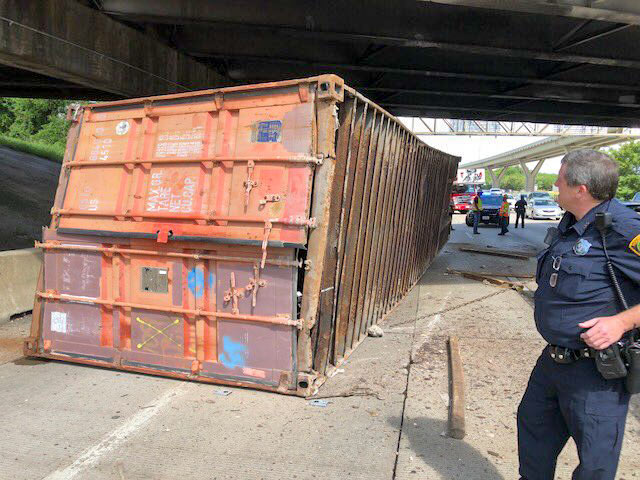
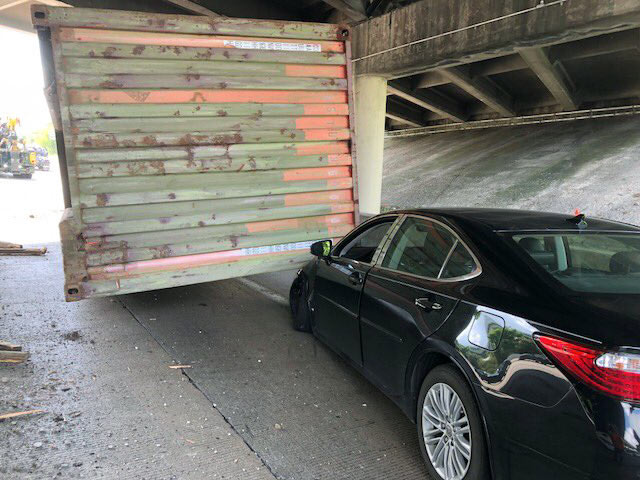
The latest 18-wheeler to drive into the Houston Ave. bridge didn’t make enough of an impact to force repairs yesterday, although it did stall I-10 traffic all the way to T.C. Jester while TxDOT closed 2 lanes to clear the debris (including the truckload pictured above pinning a sedan) and inspect the overpass to ensure its integrity. (The last round of bridge maintenance in March — to repair a strike in December — couldn’t have come at a better time: “Just as crews were putting barriers in place,” for an overnight closure to fix the damaged structure, another truck drove into it — reported Houston Public Media’s Gail Delaughter.)
Over the last 4 years, the 14-ft.-3-in.-high bridge has been hit 22 times — reports Click2Houston; historically, it’s struck “more than any other bridge in the Houston area,” says a TxDOT spokesperson. Not a great track record — until you factor in how many trucks aren’t hitting it as a result of TxDOT’s high-tech warning system. In 2015, the agency installed infrared sensors at Mercury Dr. and Wirt Road that detect oversized vehicles and — if spotted — flash a warning message to get off the road on an electronic billboard. Between January and June 2 of this year alone, the sensors transmitted 13,477 warnings.
- TxDOT using ‘size detectors’ to limit bridge strikes [KHOU]
- Grappling with a pair of Houston bridges that keep getting hit [Click2Houston]
- Bridge Due For Repairs Is Hit Again By A Truck, TxDOT Moves Ahead With I-10 Closure [Houston Public Media]
Photos: Emily Black


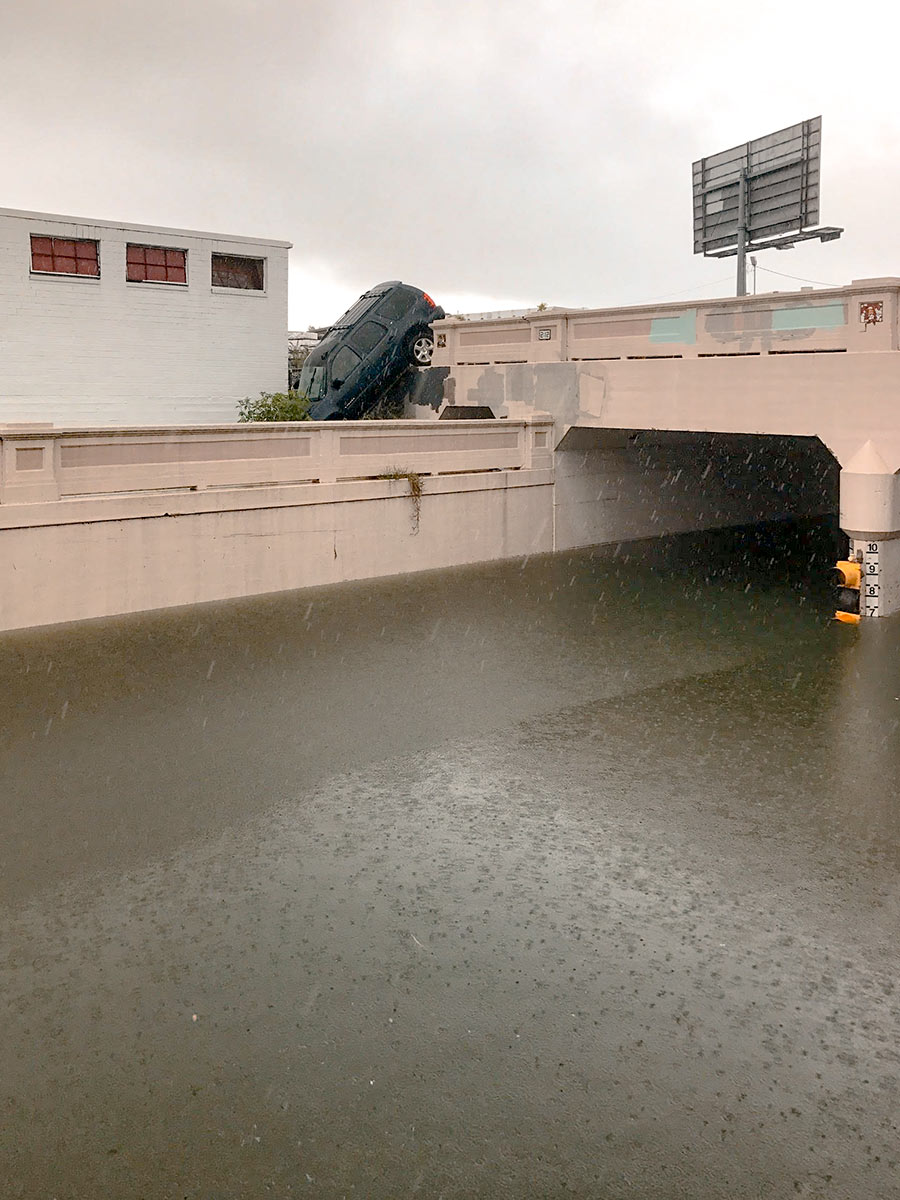
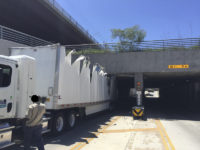 “I’d bet that the signage, 12′-9″, is probably literally correct, in that the distance from the road deck to the bottom of the bridge measures 12′-9″. However, that doesn’t mean that a truck that’s 12′-8″ high can pass through. More to the point: that doesn’t mean a truck that’s 12′-8″ high can exit the other end. Problem is that since there’s an up-slope on the exit of the underpass, the longer the truck, the higher the effective height as it climbs up the slope. [And] with respect to the alternate route, the northbound signage is terrible. It seems to indicate that the driver should turn left into a chain link fence. Where they actually should go looks like its one-way the other way. If this happens once, I understand blaming the driver. If it happens frequently, it’s probably the result of poor design and poor signage.” [
“I’d bet that the signage, 12′-9″, is probably literally correct, in that the distance from the road deck to the bottom of the bridge measures 12′-9″. However, that doesn’t mean that a truck that’s 12′-8″ high can pass through. More to the point: that doesn’t mean a truck that’s 12′-8″ high can exit the other end. Problem is that since there’s an up-slope on the exit of the underpass, the longer the truck, the higher the effective height as it climbs up the slope. [And] with respect to the alternate route, the northbound signage is terrible. It seems to indicate that the driver should turn left into a chain link fence. Where they actually should go looks like its one-way the other way. If this happens once, I understand blaming the driver. If it happens frequently, it’s probably the result of poor design and poor signage.” [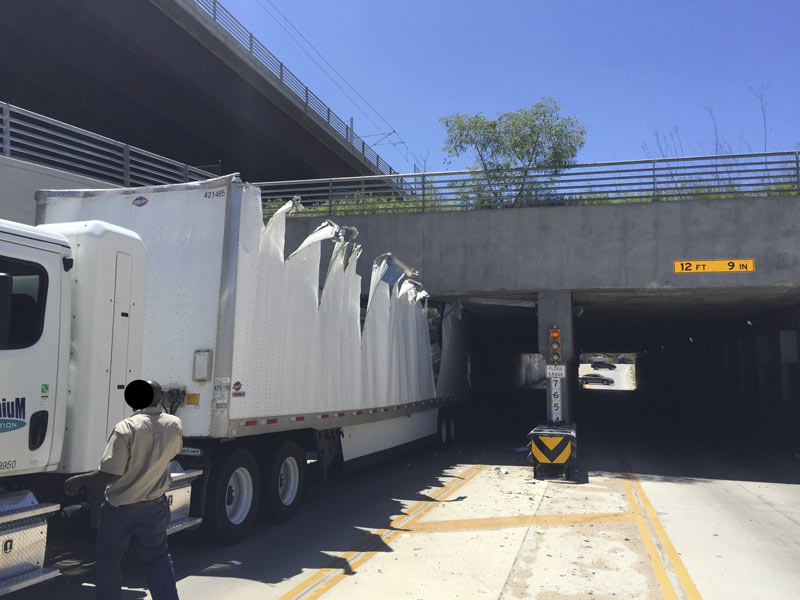
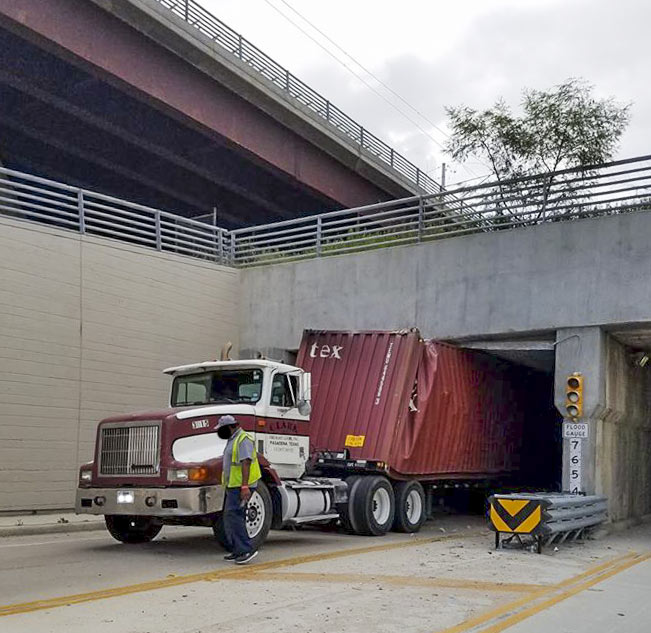
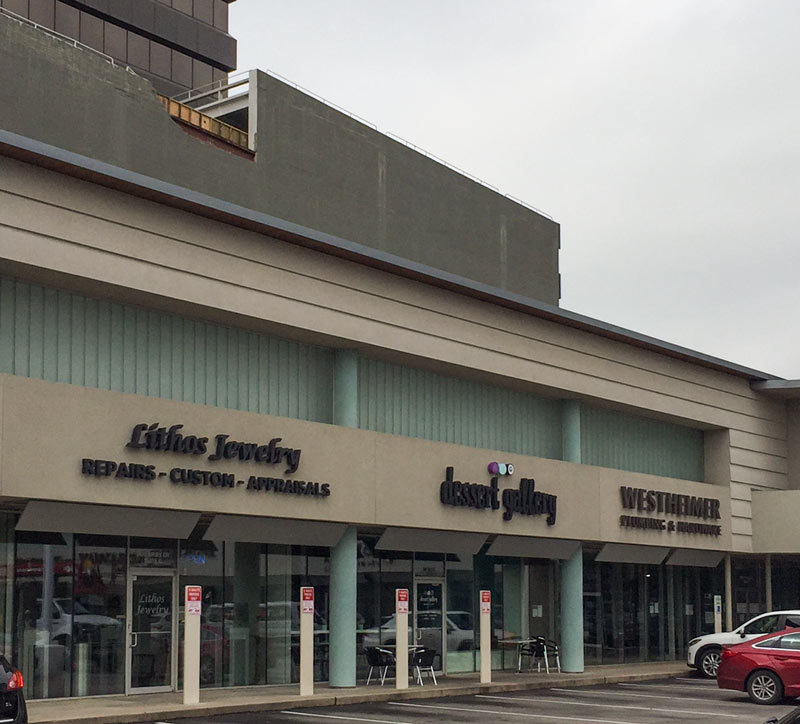
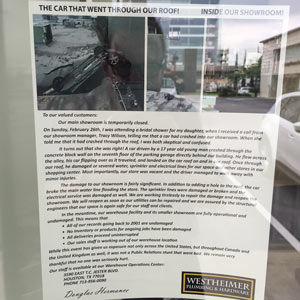
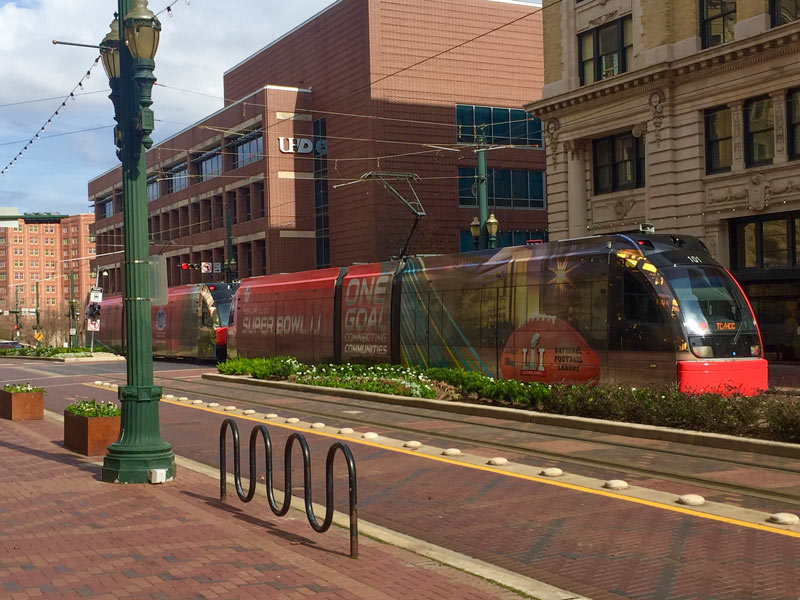 Following 2 deaths over the course of Super Bowl Week and Weekend resulting from cyclist-vs-light-rail collisions, the Chronicle‘s Dug Begley takes a look at how Houston stacks up nationally in terms of train-related accidents. The verdict, after a look through some National Transit Database data: Houston’s rail system has more walker and cyclist hits per mile “than any other major line in the country.” Houston breezes in at less that 100,000 train miles travelled per collision (compared to more than twice as many miles traveled per collision in Dallas, and more than 17 times as many in Boston). Metro CEO Tom Lambert
Following 2 deaths over the course of Super Bowl Week and Weekend resulting from cyclist-vs-light-rail collisions, the Chronicle‘s Dug Begley takes a look at how Houston stacks up nationally in terms of train-related accidents. The verdict, after a look through some National Transit Database data: Houston’s rail system has more walker and cyclist hits per mile “than any other major line in the country.” Houston breezes in at less that 100,000 train miles travelled per collision (compared to more than twice as many miles traveled per collision in Dallas, and more than 17 times as many in Boston). Metro CEO Tom Lambert